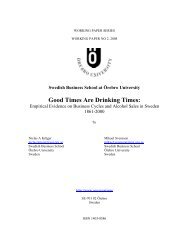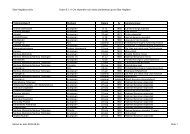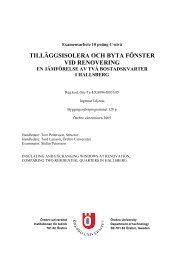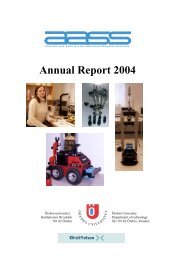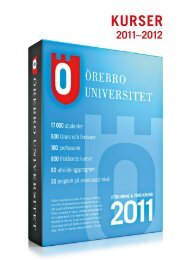Annual Report 2002 - Ãrebro universitet
Annual Report 2002 - Ãrebro universitet
Annual Report 2002 - Ãrebro universitet
Create successful ePaper yourself
Turn your PDF publications into a flip-book with our unique Google optimized e-Paper software.
48 AASS – Center for Applied Autonomous Sensor Systems<br />
2.3 Intelligent control lab<br />
Our objective is to develop intelligent control methodologies where techniques from soft<br />
computing, knowledge-based control, and conventional control are synergistically integrated<br />
for the purpose of: (i) low-level robust and adaptive control of non-linear, time-varying and<br />
uncertain systems; (ii) supervisory-level control for gain-scheduling, monitoring, adaptation,<br />
and reconfiguration; (iii) task-level control of goal-oriented system behavior and<br />
management, and supervision of activities at lower levels.<br />
2.3.1 Focus<br />
The focus of research is on the integration of soft computing, conventional control, and<br />
sensing technologies into intelligent systems for high-speed motion control. Included here are<br />
also advanced aspects of the design of dedicated mechatronic systems with embedded<br />
intelligence, e.g., unique light-weight robot arms operating in a stand-alone mode, or mounted<br />
on mobile robot platforms.<br />
The most important directions of our research are:<br />
1. Integrating visual-sensing and the control of a mechatronic system into perception-based<br />
control system (visual-servoing) able to perform human-like motions and operations;<br />
2. Development of advanced control architectures and hardware for the implementation of<br />
control routines based on soft computing;<br />
3. Development of advanced vision- and image-processing algorithms incorporating highspeed<br />
digital hardware and soft computing; and<br />
4. Integration of all of the above into a complete perception-based motion control system<br />
able to operate at high speed at all levels of intelligent control: low-, supervisory, and<br />
task-level control.<br />
The current research projects are grouped according to the following three major fields: (A)<br />
Advanced mechatronic systems; (B) Advanced control; and (C) Vision, image and signal<br />
processing.





